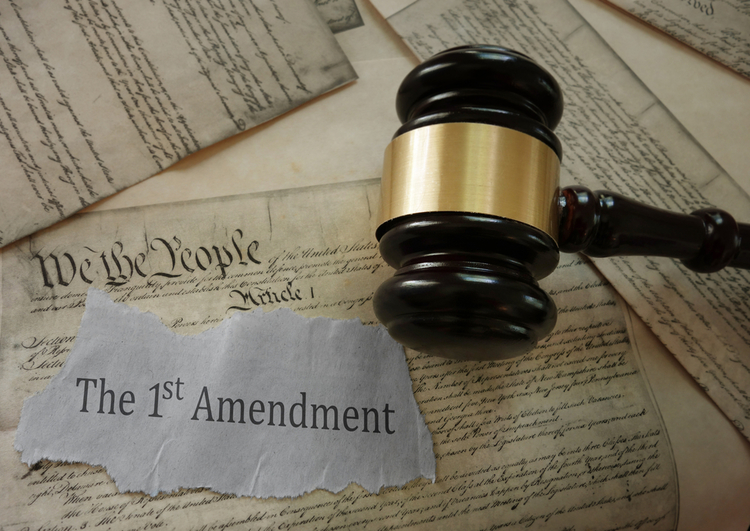National Pulse: Stifling Speech

Shutterstock.com
Government officials removed a high school student’s painting from the U.S. Capitol building earlier this year, contending that its message was anti-police and inappropriate. The student and his congressional representative objected, arguing that the government engaged in impermissible viewpoint discrimination by censoring the artwork.
The government countered that removing the painting, submitted in a congressional art competition, was its prerogative under the government speech doctrine.
The controversy raised an important question: Did the government violate the First Amendment by censoring private speech, or was it engaged in government speech? Over the last two decades, the Supreme Court has expanded the government speech doctrine, and more officials have asserted it as a defense in free speech cases.
“The government speech doctrine has the ability to swallow much of the Constitution’s protection for freedom of speech,” says constitutional law expert Erwin Chemerinsky, dean of the University of California at Berkeley law school and an ABA Journal contributor. “The Supreme Court has said that when the government is the speaker—or when the government adopts private speech as its own—the First Amendment does not apply.”
Whose speech is it?
Many trace the doctrine to a 1991 government funding case, Rust v. Sullivan, even though the court didn’t use the term government speech. The court narrowly upheld a federal regulation that prohibited doctors who received federal funds for family planning services from discussing with patients the option of abortion. Critics termed it the “abortion gag rule,” but the court upheld the regulation, writing that the government can “selectively fund a program to encourage certain activities it believes to be in the public interest, without at the same time funding an alternate program which seeks to deal with the problem in another way.”
Since then, the government speech doctrine has become more of a force in First Amendment law, thanks to Supreme Court decisions.
In Pleasant Grove v. City of Summum (2009), the court reasoned that a Utah city could decline to post a religious monument that listed the seven aphorisms of Summum in a public park, even though the park already had a Ten Commandments monument. The reason: Monuments in public parks were a form of government speech.
More controversially, a divided court ruled 5-4 in Walker v. Sons of Confederate Veterans (2015) that the state of Texas could refuse to approve a specialty license plate with a depiction of the Confederate battle flag. The majority reasoned that specialty plates are a form of government identification and communicate messages from the state. “Indeed, a person who displays a message on a Texas license plate likely intends to convey to the public that the state has endorsed that message,” wrote Justice Stephen G. Breyer.
“The Walker decision probably helped further educate governmental bodies—as well as lower courts—about the role of the government speech doctrine as a potential defense to First Amendment challenges by private individuals who seek to join or alter or silence what the government believes is its own expression,” says Helen Norton, a University of Colorado law professor and associate dean, who has written extensively about the doctrine.
Chemerinsky says governmental officials are “much more frequently claiming the government speech defense since Walker.”
Recent decisions
The case of the artwork removed from the Capitol is one high-profile example. David Pulphus of St. Louis had his painting selected by a panel of local artists and, ultimately, by U.S. Rep. William Lacy Clay, for display in the Cannon tunnel, which is part of the Capitol grounds.
Pulphus’ painting depicts a protest, including police officers with piglike heads, and a black man crucified on the scales of justice. The painting was intended to convey social injustice, including events in Ferguson, Missouri, and was displayed for months without incident. It was later removed by members of Congress for its anti-police content.
Pulphus and Clay filed a federal lawsuit, contending the removal was a form of impermissible viewpoint discrimination in violation of the First Amendment. However, U.S. District Judge John D. Bates ruled in Pulphus v. Ayers on April 14 that the art competition was a form of government speech.
Write a letter to the editor, share a story tip or update, or report an error.


